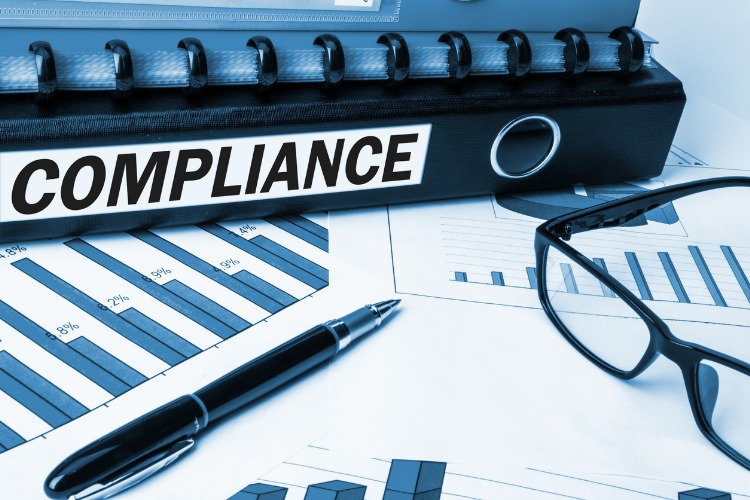Why You Should Create Meaningful Compliance KPIs
In an era where the breach of internal corporate ethics and external policies is becoming common, businesses need to implement robust compliance management systems for their own good. The cost of non-compliance is high; from lost data to regulatory fines.
Compliance managers help to keep your company compliant with industry regulations. The professionals manage compliance risk to shield the firm from the consequences of non-compliance, which include litigations and a poor brand image.
To ensure your company is compliant with regulatory rules and standards, it is critical to set relevant Key Performance Indicators (KPIs). Having meaningful KPIs is vital to corporate compliance.
Why Create Compliance KPIs?
KPIs are benchmarks that indicate the level of success compliance managers have achieved in enabling the firm to comply with regulatory requirements. There are many metrics for measuring performance. Therefore, you need to determine which KPIs are best for your business.
To identify meaningful metrics, evaluate your business objectives and the results you will need to hit to achieve those objectives. Next, come up with customized KPIs for measuring performance. Ensure that your workforce is aware of the KPIs so that the entire organization can move toward achieving business goals.
Here are five essential reasons why you need compliance KPIs:
Data Protection
A company’s data is its most crucial asset. Firms use data as evidence of transactions and to help them with current and future decision-making. With many companies storing their data remotely and others using third-party vendors, data has become increasingly vulnerable to insecurity.
Compliance KPIs will help you to monitor possible data security threats. Lack of proper data monitoring procedures can make you miss potential cyberattacks. The result? Data breaches that can land your business in big trouble.
Data vulnerabilities can result from using outdated software, weak passwords, or unknowingly downloading malicious software. Some of the KPIs that you can use to measure data security include:
a) Average time between failures
This is the time between one episode of system failure and another. If your firm takes long to experience a system failure, that indicates that your data is safe. Frequent system failures may be an indication of a data breach.
b) Percentage of maintenance schedules missed
Systems maintained at the scheduled times are less likely to experience data breaches that can result in third party infiltration. System maintenance activities include updating, fixing, improving, and configuring devices based on the required standards.
Performing regular system maintenance helps to prevent data breaches. Outdated systems, weak passwords, and the existence of viruses and other malicious software put data at risk.
c) Meantime to repair
In the case of system failure, how long does it take to get the system working again?
Longer repair times could indicate a greater extent of damage or potential data breaches. Shorter repair time is an indicator of a good level of data security.
Measure and Improve Business Performance
KPIs are useful in measuring business performance against industry standards. They are part of the Plan, Do, Check, and Act (PDCA) cycle, which helps your business to implement continuous improvements by measuring planned performance against actual performance.
Relevant compliance KPIs can help you to compare the performance of your business with your competitors, and determine the key areas you need to improve.
Increase Business Credibility and Protect Your Brand
You need to be aware of and comply with the relevant ISO standards for the technology industry. Getting an ISO certification for your business is essential because:
- It increases your brand value both locally and beyond, helping you land more business.
- It helps to increase the efficiency and effectiveness of a company. ISO standards represent the best way of carrying out operations to achieve quality results. ISO compliance results to higher customer satisfaction, employee retention, and ultimately, higher profitability.
Setting ISO compliance KPIs is, therefore, crucial to measuring the success of your ISO compliance. Examples of ISO KPIs include the rate of unwanted network traffic, frequency of data loss, and the number of information security incidents.
Identify Compliance Risk Areas and Make Improvements
Compliance risks are risks associated with non-compliance. Such risks include litigations, fine penalties, loss of business, or business closure. Put in place relevant KPIs to help you to manage compliance risks and improve your overall compliance efforts.
KPIs also help you to identify Key Risk Indicators (KRI). Identifying risk areas early helps to mitigate risks in time.
Determine the Need for Additional Resources
KPIs help to identify underperformance in your firm caused by inadequate resources, including staff and tools. In the case of underperformance, you will need to budget for extra resources. If you are dealing with a competency gap, you will need to train your employees.
KPIs makes it easy to measure compliance success, identify risks, and ultimately improve business performance. Having relevant KPIs will help you to achieve your business compliance objectives.
Author Bio
Ken Lynch is an enterprise software startup veteran, who has always been fascinated about what drives workers to work and how to make work more engaging. Ken founded Reciprocity to pursue just that. He has propelled Reciprocity’s success with this mission-based goal of engaging employees with the governance, risk, and compliance goals of their company in order to create more socially minded corporate citizens. Ken earned his BS in Computer Science and ElectricalEngineering from MIT.

